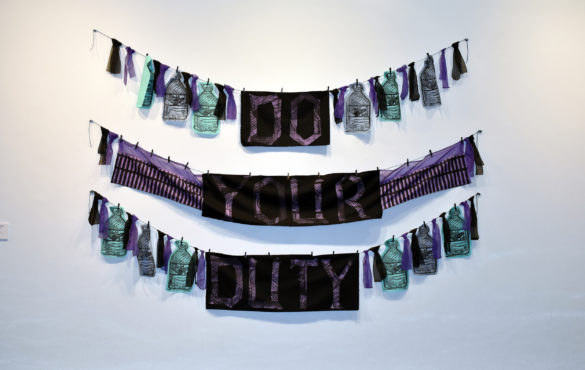Celeste De Luna
Resident Artist
Celeste De Luna is a printmaker from the lower Rio Grande Valley of South Texas. “A true daughter of the borderlands, her art celebrates the quotidian and the exceptional on the border,” writes Ines Hernandez-Avila. De Luna continues to explore the geo-political aspects of post-911 militarization of her environment such as border walls, drones, checkpoints, and bridges. Much of her work is centered on the border experiences of mixed documentation status communities. Her iconography frequently shows razor wire, fences, bridges, and “anchor babies”.
De Luna is a self-taught printmaker whose work includes large-scale woodcuts and fabric installation. Her political subject matter is social commentary with a feminine sensibility. In addition to her studio practice of creating large-scale relief prints, quilts, and installation, De Luna works in collaboration with community in Brownsville, Texas as a cofounder of the socially engaged arts collaborative Las Imaginistas. Las Imaginistas are recipients of a 2017 Artplace America Creative Placemaking grant and 2018 A Blade of Grass Fellows. Currently, De Lunais managing her print shop, Metzli Press, creating curriculum for a community printmaking collaborative, Taller de Permiso, (Permission Workshop,) and a lecturer at the University of Texas Rio Grande Valley and lives with her family in Harlingen, Texas.
Image: Celeste De Luna, Do Your Duty, woodblock on fabric, ribbon, twine, clothespins, 2019.
Services Offered:
- Exhibition Opportunities
